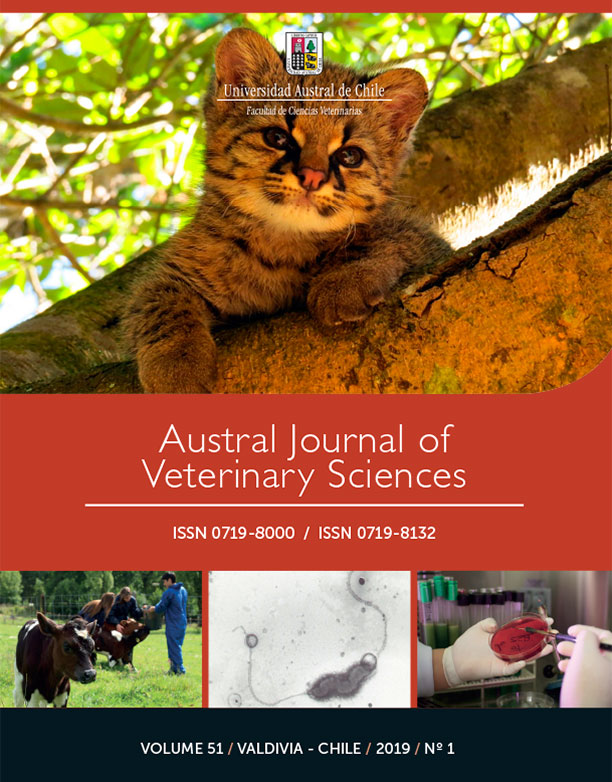Energy balance of pregnant vicuñas (Vicugna vicugna) in the Chilean High Andes
Conteúdo do artigo principal
Resumo
Energy unbalance may be the cause of low fertility rates found in vicuñas. The objective of this study was to estimate the temporal variation of the nutritional status in pregnant vicuñas from a herd kept under captivity in the Chilean High Andes. The hypothesis under study is that animals are able to maintain the energy balance during the dry season. Six pregnant vicuñas were examined in August, October and January (year 2015-2016). Reproductive status was estimated by ultrasonography and plasma progesterone concentration. Live weight (LW) and body condition score (BCS: 1-5 scale) were measured for each animal. A blood sample was taken to estimate the plasma concentrations of total protein (Biuret method), cholesterol (CHODPAP method), triglycerides (GPO-PAP method), β-hydroxybutyrate (enzymatic method) and non-esterified fatty acids (NEFA; enzymatic colorimetric method). Vicuña groups had similar LW, BCS, plus similar plasma concentrations of metabolites, total protein and progesterone. Females did not increase their LW during gestation and their BCS in January (2.9) was below the recommendations for late pregnancy in camelids (BCS 3.5). NEFA and β-hydroxybutyrate values were higher than those expected under nutritional energy balance signalling a lipolytic and ketogenic metabolic response, respectively. The absence of weight gain and the values of NEFA and β-hydroxybutyrate show that pregnant vicuñas suffer a negative energy balance during the dry season in the Chilean High Andes. This can cause abortion and contribute to low fertility rates of the herds. It is suggested to provide pregnant vicuñas with food supplements up to birthing, in years of severe drought.

